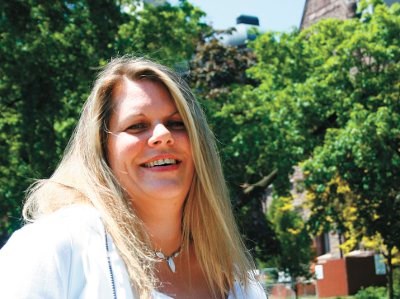Shantel Cashmore, a personal support worker (PSW) at Extendicare Falconbridge, was one of a delegation of 35 PSWs from across the province to visit Queen’s Park May 19.
The health care workers were on hand as the province officially declared May 19 as PSW Day. PSWs provide a range of care in health facilities, including assisting with personal hygiene and basic medical care.
The PSWs met with several MPPs during their visit to Toronto, and talked about their jobs. Cashmore met with Thunder Bay-Superior North MPP and Minister of Northern Development and Mines Michael Gravelle.
The event was organized by Service Employees International Union (SEIU) Local 1, which represents more than 7,000 PSWs across Ontario.
“We’re just trying to meet with the politicians to explain exactly what a PSW does,” Cashmore said. “They know what nurses do, and they know what registered practical nurses do, but I don’t know that they really understand what a PSW does in a nursing home or out in the community.
“We are the ones in the nursing homes who do the hands-on care, the care that the residents need to get up, to be washed and have their dignity.”
Cashmore, who has been a PSW for 17 years, said she thinks the province should put more money into long-term care facilities so they can hire more PSWs.
She said she is usually assigned to care for about 12 residents at Extendicare Falconbridge each day, but if the facility is short-staffed, she can be assigned up to 15 residents.
“That’s a lot of work for one person,” Cashmore said.
She said she’d like to provide “that extra little TLC,” such as curling residents’ hair, or giving them a hug, but often she doesn’t have time.
The residents coming into long-term care facilities are also a lot sicker than they used to be, she said.
“At one time, when I first started, a resident would walk in, and they wouldn’t need very much care,” Cashmore said.
“The residents we’re getting now come from the hospital. They can’t walk, or they’ve had strokes, and they can’t use one side. The families are trying to keep them at home as long as they can, and when they can’t care for them anymore, they come into the (nursing home).”
Join Sudbury.com+
- Messages
- Post a Listing
- Your Listings
- Your Profile
- Your Subscriptions
- Your Likes
- Your Business
- Support Local News
- Payment History
Sudbury.com+ members
Already a +member?
Not a +member?
Sign up for a Sudbury.com+ account for instant access to upcoming contests, local offers, auctions and so much more.
